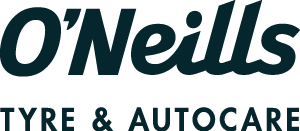Blog Writing
Clients
Your trusted SEO agency
Our in-house copywriters will create a clear, strategic blogging plan geared towards success
Stand out from the crowd
Cut through the noise and confusion of online content. We’ll help you stand out from the crowd and delight customers.
See clear results
Blogging is a powerful marketing tool. Work with experienced blogging specialists who’ve helped hundreds of businesses grow their sales.
Free Strategy Session
Learn how to boost your sales and improve your online presence with your free digital marketing strategy session. We’ll look at your website, Google rankings, social advertising activities (like Meta and LinkedIn) and more, and discuss opportunities to grow your revenue.
- 100% obligation free – no strings attached
- Detailed analysis of key digital marketing factors
- Valuable insights into your current performance
- Practical recommendations on improving your digital marketing performance

Our Services
We’ve got everything covered.
Editorial Management
At Gorilla, a dedicated content manager will set up, manage and review a monthly editorial calendar to ensure you’re publishing the right content at the right time and targeting the best metrics for success.
Your content marketing strategy is a program, not a campaign, meaning your blog will be an ongoing project. Every article you create and publish should work together to snowball your momentum. The more value you provide, the greater your investment return.
Keyword Research
You can have the best blog content on the internet, but if Google can’t find and recommend it, you’re missing out on a whole stack of precious potential customers.
The Gorillas know keyword research better than you know your uncle. You don’t have to muck around trying to guess which topics you should be writing about.
We’ll analyse your audience, research your niche, and develop a list of the highest priority key phrases you need to target to find and help as many potential customers as possible.
Blog Content Optimisation
Your blog content needs to speak Google’s language to make page one. Our team will eliminate the stress and confusion of optimising your blog content to maximise your search engine results.
We know how to infuse your target keyphrases into your blog articles to tell Google what you want to rank for without compromising the experience for the reader.
The Gorillas also happen to specialise in influencer marketing and outreach. We can turbo-boost your blog subscription growth by collaborating with influencers with huge existing audiences full of your target customers. Social shares, increased rankings, and more potential buyers await.
Blog Content Writing and Editing
Your blog is your mini-media empire. The internet has given you the chance to talk directly with your customers.
Blogging about your products and services won’t build your audience. Otherwise, your blog becomes a never-ending online steam mop infomercial, save for the irrepressible botoxed smile and unnaturally white teeth.
We know how to create blog content that interests your audience and achieves your business goals.
Our team of experienced online writers will analyse your target audience and develop articles that generate awareness, establish trust, assist product research and re-engage existing customers with your brand.
You’ll no longer have to worry about filling that dreaded blank page.
Blog Content Promotion
You can have the finest, most fascinating, Oscar-worthy content, but it’s almost worthless without an audience to enjoy it.
Once you hit publish, your job has just begun. You need to spend at least 25% of your blogging time promoting your work to the right people, and our online marketing specialists know how to find, attract and convert your target audience.
We’ll prepare promotional social media and email marketing copy for every article we write. All you have to do is upload and schedule your promotion – we’ll do the hard work for you.
Testing, Tracking and Optimisation
We Gorillas don’t do set-and-forget. You can’t afford to throw up a blog article, then sit back and hope to ‘watch the dollars roll in’.
Your blogging investment needs to generate genuine business results. While you can’t expect to increase sales immediately, your blog content needs to increase traffic, rankings, pageviews and email subscription rates.
We’ll set up and monitor key conversion metrics to determine the success of your blogging program. This allows us to monitor content performance and optimise based on our analysis.
The blog article you publish today will attract new potential customers to your site for years and years to come. We’ll make sure the time and money you spend on your blog pays you back in subscribers, sales and loyal customers.
How does blogging work?
Our blogging service includes regular content that has been carefully curated to attract more website visitors and sometimes even convert them into customers.
Whether you want to attract, convert, or retain more customers, valuable blog content is an inexpensive and effective way to develop stronger relationships with subscribers.
Why your business needs high-quality blogging
Your blog isn’t just a ‘collection of articles’. It’s a bonafide library of valuable information and resources about your industry, your products and the topics your customers are actually interested in. From buying guides to product reviews, how-to instructional pieces and visual inspiration, your customers can learn a lot about your business before ever hitting the “contact” button.
You might even clear up a few FAQs to save time on customer service and focus on the fulfilment process.
But that’s not all a blog can do for your website. A professionally produced blog can:
- Improve keyword rankings for medium and long-tail keywords
- Increase shares and engagement on social media platforms like Meta, Twitter and LinkedIn
- Increase clicks, page views and time spent on-site
- Increase subscribers
- Increase brand awareness (and help you meet new customers)
- Increase brand trust (and attract more customers in turn)
- Establish your business as an industry leader and source of reliable information.
Your blog is the newspaper, magazine, radio station and TV show of your business. You can create a genuine business asset that generates and nurtures customers without the massive costs of paid advertising or public relations.
Blogging with Gorilla
Gorilla is a leading blogging agency; we can create the content you need to become the go-to online resource in your niche. Our team of experienced online writers and editors will help you turn your blog from an afterthought into a strategic asset.
Got a project? Let’s chat
Popular Questions
Does blogging really make a difference?
Yes! Almost four billion people are connected to the internet, and a blog is a great way to expand your reach and meet new customers.
Plus, the more high-quality, indexed pages you have on your website, the more opportunities you have to rank in search results, ultimately increasing your organic traffic and engagement metrics.
Google also likes to see fresh new content — blogging is bulletproof for showing Google you’re actively engaged with your audience and industry.
Do you provide blogging training?
Absolutely. If you have an internal team with extra time, we can provide professional blogging training to ensure they understand how to write engaging content for customers and optimise that content for search engines like Google.
We can also review content that has been written in-house to ensure it ticks all the SEO boxes!
How do I know if my blogging strategy is successful?
When reviewing blog performance, we look into engagement metrics like clicks, impressions and existing keyword rankings. Plus, we offer content audits to review the performance of the blogs we’ve written and uploaded so that we can identify blogs performing well or needing a little more love with rich content and additional information.
What can I use my blogs for?
Blogs are handy for email newsletters, social media sharing and answering customer FAQs. You can even add functionality to your website to display relevant blogs on matching category pages, so the customer can always find more information about your products and services.
How do I write effective blogs?
Effective blog posts are written with your target audience in mind and are structured to be easy to read and engaging. It’s important to use a clear and conversational tone, include relevant keywords, and provide valuable information or insights useful to your readers. Our copywriters can help you develop a writing style that resonates with your audience.
Do I have to write the blogs?
Effective blog posts are written with your target audience in mind and are structured to be easy to read and engaging. It’s important to use a clear and conversational tone, include relevant keywords, and provide valuable information or insights useful to your readers. Our copywriters can help you develop a writing style that resonates with your audience.
How can blogging help my business generate leads and sales?
Effective blog posts are written with your target audience in mind and are structured to be easy to read and engaging. It’s important to use a clear and conversational tone, include relevant keywords, and provide valuable information or insights useful to your readers. Our copywriters can help you develop a writing style that resonates with your audience.
How do I promote my blogs?
Effective blog posts are written with your target audience in mind and are structured to be easy to read and engaging. It’s important to use a clear and conversational tone, include relevant keywords, and provide valuable information or insights useful to your readers. Our copywriters can help you develop a writing style that resonates with your audience.
How often should I blog?
Effective blog posts are written with your target audience in mind and are structured to be easy to read and engaging. It’s important to use a clear and conversational tone, include relevant keywords, and provide valuable information or insights useful to your readers. Our copywriters can help you develop a writing style that resonates with your audience.



